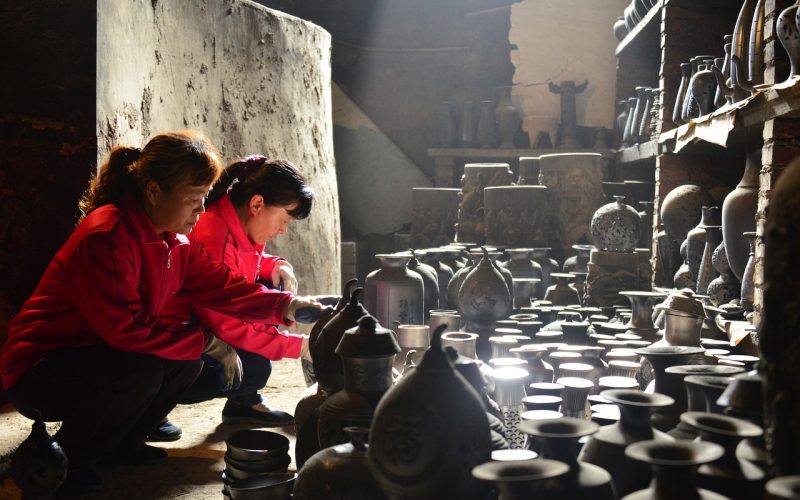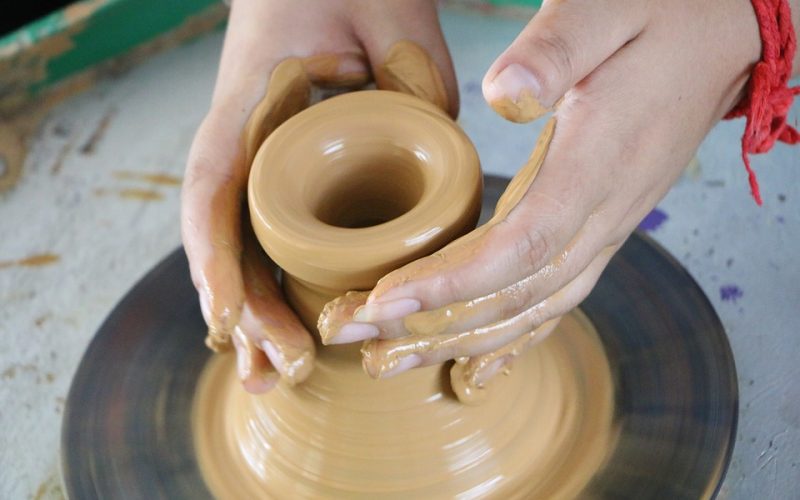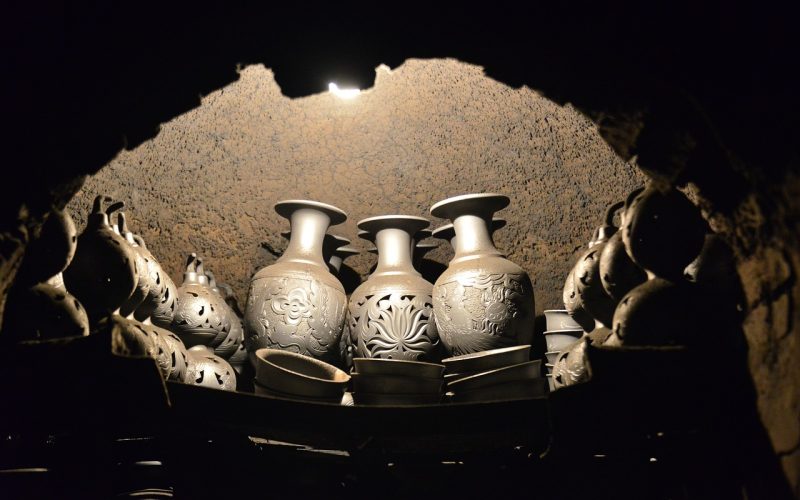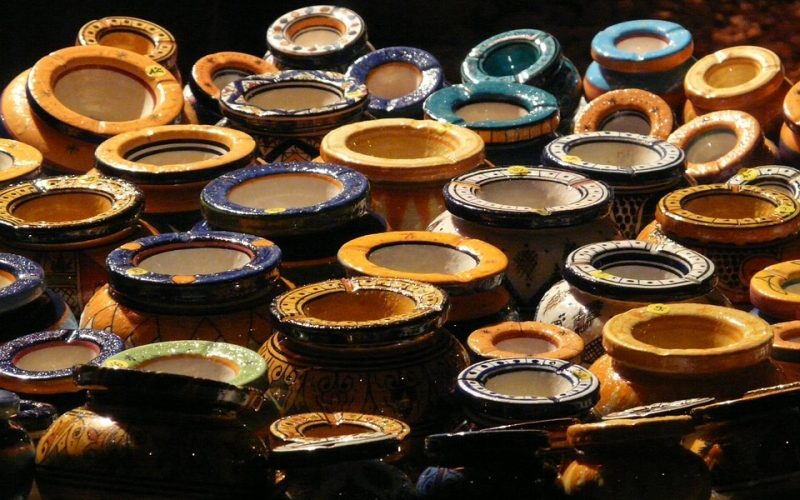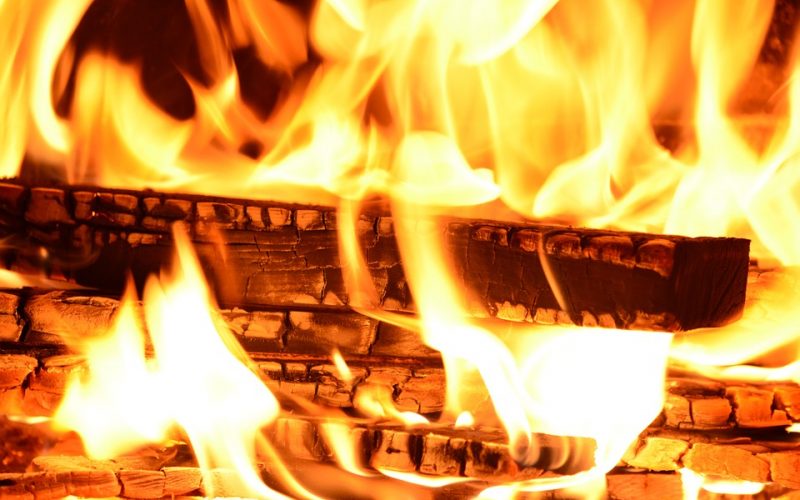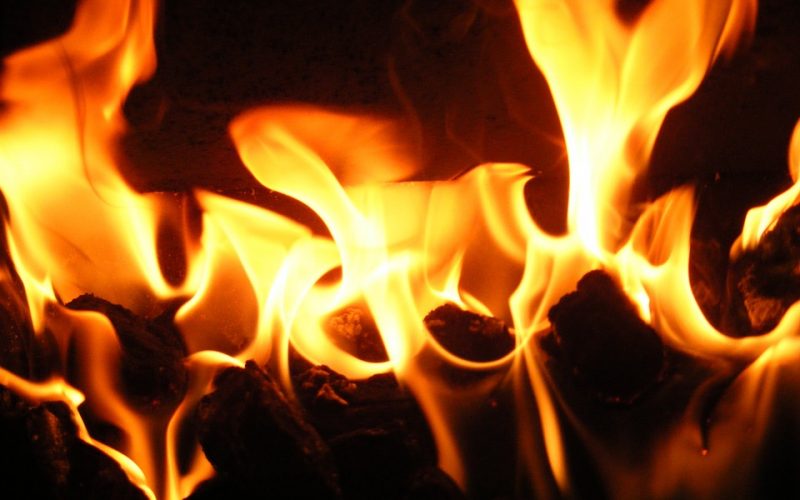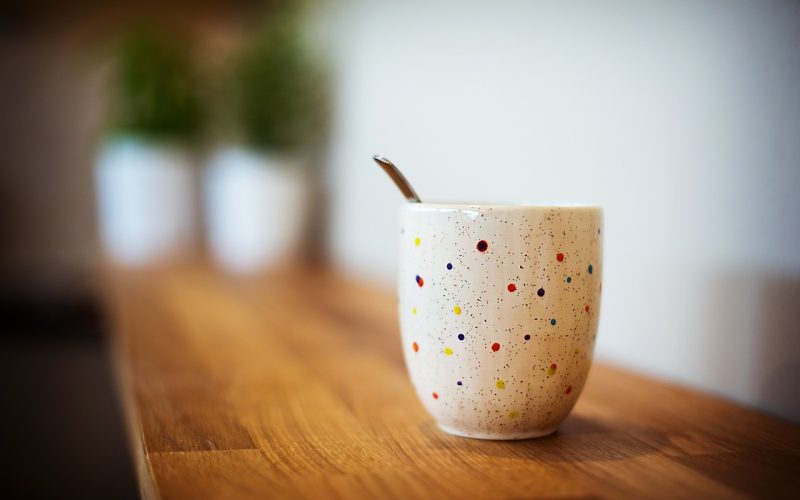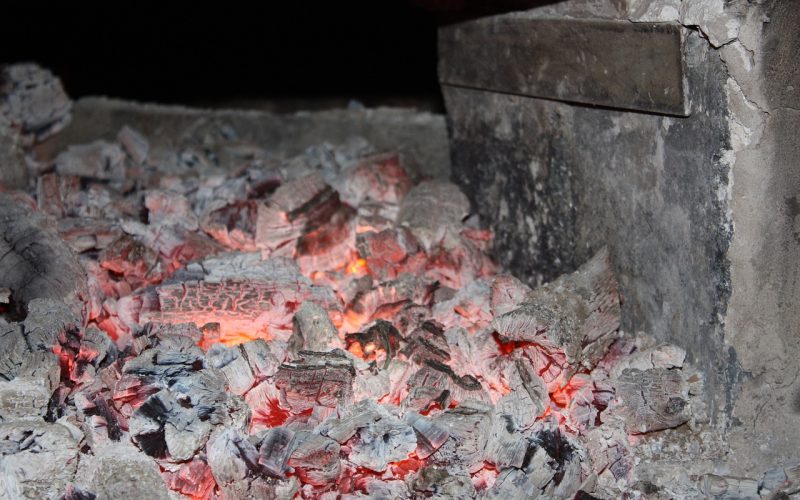Different Kilns, Different Result
Understanding the effects of different kiln firing methods is crucial for potters aiming to achieve specific aesthetic and functional results in their ceramic work. The choice of firing method can significantly influence the final appearance and durability of pottery.
Oxidation firing
Oxidation firing is one of the most straightforward and widely used methods. It occurs when the kiln has ample oxygen, ensuring that the fuel burns completely. Electric kilns are typically employed for oxidation firings due to their controlled environment. This method often results in bright and consistent colours, as the presence of oxygen prevents the reduction of metal oxides in glazes and clay bodies. Pottery fired in an oxidation atmosphere usually has a clean and vibrant finish, making it ideal for achieving specific colour palettes and detailed designs.
Reduction firing
In contrast, reduction firing, commonly performed in gas kilns, involves a limited oxygen supply. By partially closing the kiln's air vents, the combustion process is restricted, leading to the reduction of metal oxides. This method can produce a wide range of colours and effects, often resulting in deeper and more complex hues. Reduction firing is particularly prized for its ability to produce rich, earthy tones and lustrous surfaces, such as copper reds and celadons. However, it requires careful monitoring and expertise, as the unpredictable nature of the process can lead to unexpected outcomes.
Raku firing
Raku firing, originating from Japan, is a rapid and dramatic technique that emphasises spontaneity and unpredictability. In this method, pots are heated quickly and removed from the kiln while still molten. They are then placed in containers filled with combustible materials like sawdust or newspaper, which ignite and create a smoky environment. The resulting reduction atmosphere causes unique crackle patterns and metallic or iridescent finishes. Raku firing is celebrated for its artistic creativity and serendipitous results, but the resultant pottery is often porous and not watertight, limiting its functional use.
Wood firing
Wood firing is an ancient technique that has seen a resurgence among contemporary potters seeking a connection to traditional craftsmanship. This method involves stoking a kiln with wood over several days, allowing ash to settle on the pottery surface. The combination of ash and high temperatures creates natural glazes and textures that are unique to each firing. The resulting pots often feature warm, earthy tones and intricate surface variations, reflecting the dynamic interplay between flames, ash, and clay. Wood firing demands patience and skill, as the process is labour-intensive and unpredictable, but the results are highly prized for their character and depth.
Soda firing
Soda firing is a relatively modern technique that introduces sodium carbonate, or soda ash, into the kiln during the firing process. The soda vaporises and interacts with the silica in the clay, forming a glassy coating on the pottery surface. This method is known for creating subtle, organic textures and a soft, satin-like sheen. Soda firing allows for a wide range of expressive effects, as the soda vapour can move unpredictably within the kiln, enhancing certain areas of the pottery while leaving others untouched. The allure of soda firing lies in its ability to produce both controlled and spontaneous results, offering potters a balance between precision and chance.
Salt firing
Similar to soda firing, salt firing introduces salt into the kiln, which vaporises and reacts with the pottery surface. This technique originated in Germany in the 15th century and became popular for its distinctive orange-peel texture and subtle glaze effects. Salt firing can produce a range of colours, from soft pastels to rich browns, depending on the composition of the clay and glazes used. However, due to environmental concerns about the release of chlorine gases, salt firing has become less common and is often replaced by soda firing, which achieves similar effects with fewer environmental impacts.
The choice of kiln firing method plays a critical role in determining the final characteristics of pottery. From the bright and consistent results of oxidation firing to the unpredictable beauty of raku and wood firings, each method offers unique opportunities for creativity and expression. Understanding these techniques allows potters to harness the full potential of their craft, creating pieces that are not only functional but also artistically compelling.
